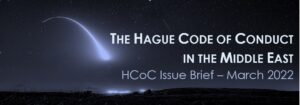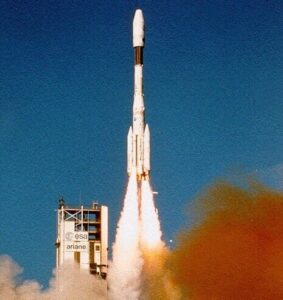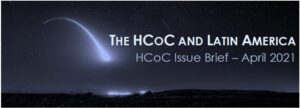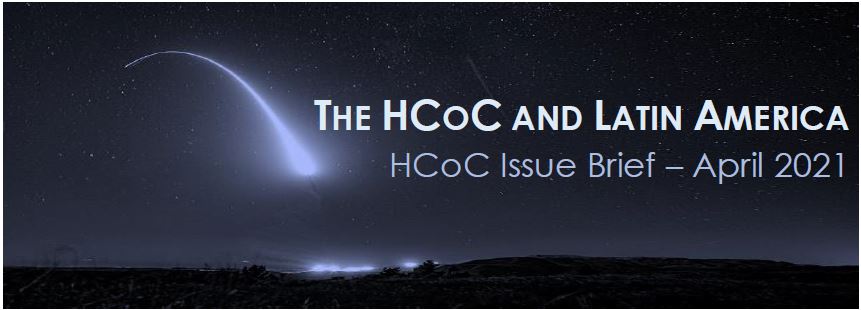
About the Hague Code of Conduct
Adopted in 2002, the Hague Code of Conduct against Ballistic Missile Proliferation (HCoC) is a politically binding instrument aiming to limit the proliferation of weapons of mass destruction (WMD) delivery vehicles. Composed of a set of transparency and confidence-building measures, the HCoC is the only existing multilateral instrument to focus on WMD delivery vehicles. The HCoC has reached 143 subscribing states (December 2022) vs 93 at its inception.
When subscribing to the HCoC, states commit to abide by a set of UN treaties and international conventions on space security; to produce an annual declaration regarding ballistic missile capacities and national policy on non-proliferation and disarmament treaties and instruments; and to deliver pre-launch notifications prior to any missile or space launch. Documents are uploaded onto a dedicated online platform managed by Austria, which acts as the HCoC Immediate Central Contact (Executive Secretariat). Subscription to the HCoC is free of charge.
While subscribing states are asked to exercise ‘maximum restraint’ in the development of ballistic capacities, they are proscribed neither from possessing ballistic missiles nor from pursuing space launch activities. In return, subscribing to the HCoC enables states to gain access to information shared by other subscribing states, and to display their political commitment to non-proliferation and disarmament.
In brief
Latin America is one of the regions with the highest level of support for the HCoC. This support reflects the historic commitment of the region in favour of disarmament and non-proliferation.
The remaining four non-subscribing states – Bolivia, Brazil, Cuba and Mexico – have voiced concerns about the adoption of the Code outside the United Nations framework and its limited scope.
However, the HCoC can be complementary to an ambitious disarmament agenda – as a first, concrete step towards strategic risk reduction. Moreover, it can play a positive role in building confidence on the peaceful nature of space programmes, which is essential as a majority of Latin American states are currently emerging as space actors.
Authors: Lauriane Héau and Emmanuelle Maitre
From ballistic missiles to launchers
Two ballistic missile programmes have been conducted in Latin America1 by Argentina and Brazil, but have since been dismantled in favour of peaceful space programmes. In the late 1970s and 1980s, both states tried to exploit their skills in rocket development to manufacture delivery vehicles with potential nuclear capabilities. The development of military nuclear capabilities was fuelled by the rivalry between the two countries.
Ballistic missile programme of Argentina (approx. 1975-1993)
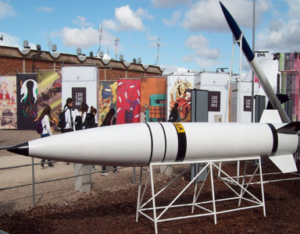 – National production capacities from the mid-1970s with assistance of Western European countries.
– National production capacities from the mid-1970s with assistance of Western European countries.
– Production of the Alacrán /Condor IAIII (pictured): single-stage, with range of 115 km and payload of 500 kg.
– Initiation of the Condor II programme (medium-range), in cooperation with Iraq and Egypt.
Ballistic missile programme of Brazil (approx. 1985-1995)
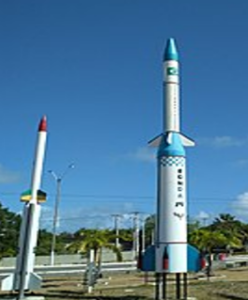 – MB/EE (150, 300, 600, 1000) series developed by Orbita from Sonda sounding rockets (pictured): short and medium-range solid-fuel missiles
– MB/EE (150, 300, 600, 1000) series developed by Orbita from Sonda sounding rockets (pictured): short and medium-range solid-fuel missiles
– SS (150, 300, 600, 1000) series developed by Avidras from Sonda sounding rockets: short and medium-range solid-fuel missiles
– Brazilian firms suspected of assisting the Iraqi missile programme in the 1980s.
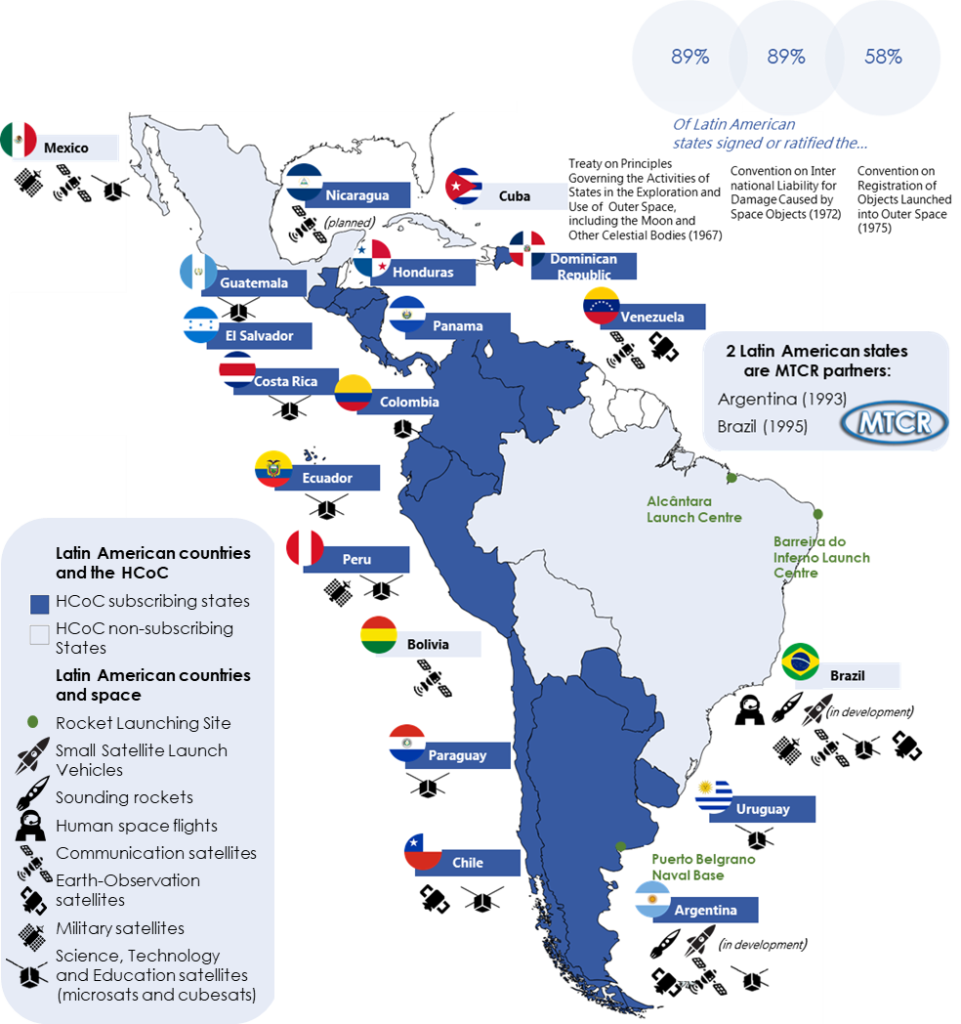
Strong regional support for WMD disarmament and non-proliferation
While these programmes led to the development of ballistic missile prototypes, they lacked operational capabilities in part due to Western states’ refusal to provide key technologies, the unreliability of industrial partners and the lack of a strategic rationale for the programmes as nuclear ambitions were abandoned and bilateral relations between Argentina and Brazil greatly improved.2
The development of launching technologies was redirected to peaceful uses, which materialized with the adoption of a Joint Declaration on Bilateral Cooperation on the Peaceful Uses of Outer Space in 1989. In 1993, Argentine joined the Missile Technology Control Regime (MTCR), followed in 1995 by Brazil, which enabled their integration in international initiatives on the peaceful exploration of space. In 1997, Brazil became the first South American state to launch a satellite with its VLS-1 rocket. While this programme ended in 2003, Brazil is currently developing a small satellite launcher in cooperation with Germany (VLM). Argentina’s National Space Activities Commission (CONAE) is also developing an orbital launch vehicle called Tronador II/III. Both countries are currently also operating sounding rockets.
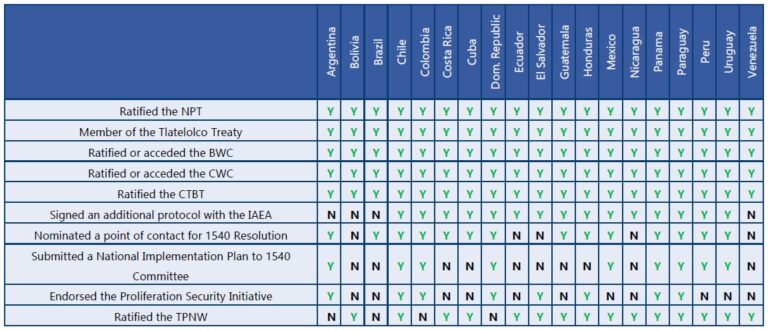
A large majority of Latin American states are now also operating satellites, mostly for scientific purposes but also for communication and earth observation. The development of microsats and cubesats has led to renewed interest in the field and paved the way for a variety of projects to deploy indigenously-built systems in orbit in states such as Costa Rica, Colombia or Guatemala.
Given this intense activity, there is strong regional interest for the promotion of a safe and peaceful access to space. This is reflected in regional actors’ support to the UN conventions on the peaceful use of space and in their active participation in multilateral forums dedicated to these issues. It is also consistent with the high level of support for the HCoC, as one of the Code’s objectives is to remove ambiguity on the nature of space programmes in order to favour the peaceful use of those technologies.
Strong regional support for WMD disarmament and non-proliferation
The high rate of subscription to the HCoC in Latin America (79 %) reflects the commitment for non-proliferation and disarmament in the region. This concern emerged during the Cold War, especially in the wake of the Cuban missile crisis, during which regional states witnessed their vulnerability to the global nuclear risk. This awareness led to the creation of a nuclear-free zone in Latin America and the Caribbean with the Tlatelolco Treaty in 1967. Since then, Latin American states have been resolute in promoting nuclear disarmament and in supporting international agreements to that end. There is universal regional adherence to the Biological Weapons Convention (BWC), the Chemical Weapons Convention (CWC) and the Comprehensive Test Ban Treaty (CTBT). In recent years, this commitment took the form of a regional effort to ban nuclear weapons at the multilateral level, which led to the adoption of the Treaty on the prohibition of nuclear weapons (TPNW).
On the other hand, some states, including Mexico and Brazil, have voiced their concern that non-proliferation initiatives may entail restrictions on the development of civilian technologies. Some have also stated their opposition to initiatives developed outside multilateral frameworks and have stressed the importance of working within existing regional frameworks, such as the Brazilian–Argentine Agency for Accounting and Control of Nuclear Materials. As a result, some states have stayed outside more recent non-proliferation initiatives, in particular the International Atomic Energy Agency (IAEA) Additional Protocol or the Proliferation Security Initiative.
Challenges and opportunities for Latin American states in subscribing to the HCoC
The four regional states staying out of the HCoC have raised concerns regarding the Code, namely that it could infringe on the rights of states to use civilian launching tech-nologies or the Code’s limited scope and lack of effectiveness in addressing nuclear dis-armament in the short term. Those concerns, however, do not reflect an opposition to the substance of the HCoC. Bolivia, Brazil and Mexico have voted in favour of a majority of biennial UNGA resolutions in support of the HCoC. The last resolution in December 2022 was adopted with quasi-unanimous support from Latin American states. These votes are essential to bring multilateral legitimacy to the Code despite its inception outside the UN. They illustrate that a majority of Latin American states are convinced that the HCoC can accompany ambitious space programmes by clarifying the nature of activities and bringing transparency on launches. While disarmament might be their principal objective, intermediary steps such as the HCoC, which limit the risk of WMD use as long as these weapons exist, are perceived as useful tools. Participation to the HCoC is therefore a concrete way of opposing the unregulated dissemination and deployment of ballistic systems and of supporting the universalisation of confidence-building measures in a global context marked by renewed tensions and insecurity.
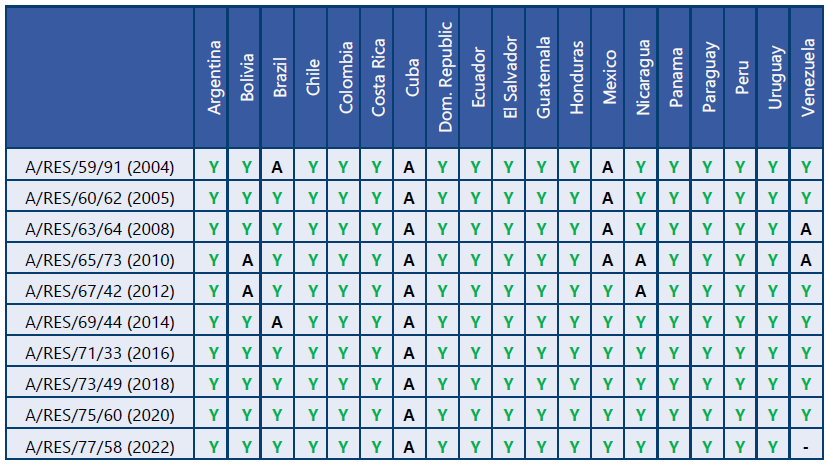
1 In this paper, Latin America is defined as covering Argentina, Bolivia (Plurinational State of ), Brazil, Chile, Colombia, Costa Rica, Cuba, the Dominican Republic, Ecuador, El Salvador, Guatemala, Honduras, Mexico, Nicaragua, Panama, Paraguay, Peru, Uruguay, Venezuela (Bolivarian Republic of).
2 Dinshaw Mistry, Containing Missile Proliferation. Strategic Technology, Security Regimes, and International Cooperation in Arms Control, Seattle, University of Washington Press, 2003.

